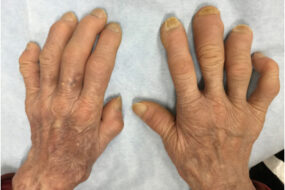- Home
- INTERNAL MEDICINE
- Tricuspid Regurgitation
Tricuspid regurgitation is a common valvular condition. It is most commonly secondary or functional, occurring due to right ventricular enlargement following right heart failure, and tends to occur mostly in the elderly and with atrial fibrillation.
1. Primary;
- Endocarditis, particularly among IV drug users
- Rheumatic heart disease
- Ebstein anomaly
- Impingement by device lead
- Ruptured chordae tendineae
2. Secondary;
- Pulmonary hypertension
- Right ventricular failure
- Right ventricular infarction
Clinical features;
- Tiredness due to reduced cardiac output
- Hepatomegaly and pedal oedema due to venous congestion
- giant v wave on the JVP- the most prominent sign
- A pansystolic murmur at the left sternal edge
- Pulsatile liver
Investigations;
1. Echocardiography-
- Dilatation of right ventricle
- Thickened leaflets in rheumatic heart disease
- Vegetations in endocarditis
Management
General;
- Diuretics
- Management of associated pathology
Definitive;
- Those with normal pulmonary artery pressures usually tolerate the reflux well
- Valves damaged by endocarditis do not require repair
- Those with rheumatic damage may require tricuspid valve replacement
- Those undergoing mitral valve replacement and have marked dilatation of the tricuspid annulus will benefit from valvular repair with annuloplasty
- Numerous percutaneous approaches to tricuspid valve repair are under evaluation












